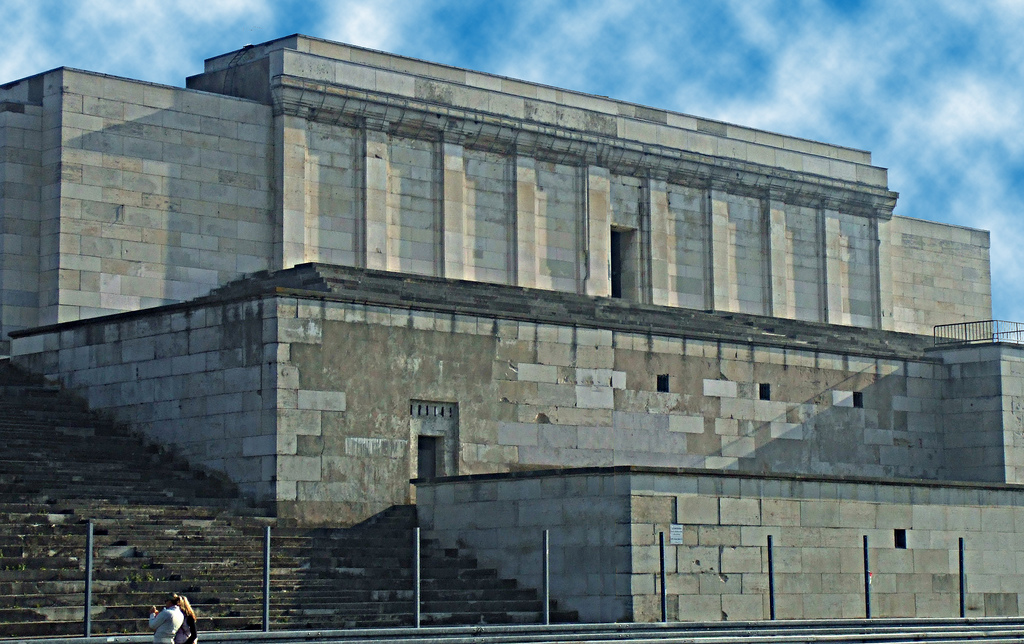
1938: Hitler’s Gamble
by Giles MacDonogh
-Reviewed by Adam Fleisher
 Giles MacDonogh starts and finishes this fine brief study of the Third Reich in the “crucial” year of 1938. The three key events of both the book and the year are the annexation of Austria, the Munich Agreement, and the intensified persecution of Jews living under Nazi rule.
Giles MacDonogh starts and finishes this fine brief study of the Third Reich in the “crucial” year of 1938. The three key events of both the book and the year are the annexation of Austria, the Munich Agreement, and the intensified persecution of Jews living under Nazi rule.
MacDonogh, who has written a handful of books about German history, organizes 1938 chronologically. This type of structure – the chapter titles are the months of the year – might have been a problem, had it interfered with the development of broad thematic arguments. But in this case it works. MacDonogh’s pacing creates a sense of the Nazi regime’s relentless pursuit of territory (lebensraum) and its acute economic and military vulnerabilities. And by recounting the increasingly desperate efforts that Europe’s Jews made to escape as the Nazis became more violent and other countries less welcoming over the months, 1938 makes Nazi Europe feel like a slowly closing vise.
The events of 1938 were not planned in advance. As the year began, anti-Semitic violence had ebbed. Hitler was “thinking more about territory and how he would ensure that he remained absolute master of the Third Reich.” Germany was short of steel – essential for armaments – and the military was a “shambles.” The economy was on the verge of collapse, barely able to feed its citizens and constantly lacking hard currency. Hitler set his sights on Austria first. The Nazis began taking over the government even as Chancellor Kurt Schuschnigg resisted. He hoped for help from the rest of Europe, and Hitler worried that it might arrive. It never did, MacDonogh explains: “no one was prepared to guarantee the state’s security.” With his hand forced by Hitler, Schuschnigg resigned, and with the Austrian army ordered to stand down, German troops moved in unopposed.
MacDonogh argues that the relative ease with which the Austrian annexation, or Anschluss, took place set in motion the other key events of the year. It gave Hitler and the Nazis confidence that the great powers would not stop them. They were right – in September, British Prime Minister Neville Chamberlain tried to make peace by ceding the well-defended parts of western Czechoslovakia to Hitler. 1938 seems to argue that Chamberlain essentially, though of course unknowingly, helped the Nazis achieve their objectives without having to resort to a war that could have destroyed them.
The Anschluss also returned anti-Semitism to the forefront of Nazi policy. The Nazis stepped up their efforts to rid Europe of its Jews. Viennese Jews – many of whom were completely assimilated – were stripped of their fortunes, abused, attacked and deported to the concentration camp at Dachau and then Buchenwald. The savagery with which Austrian Jews were treated also opened the door to harsher treatment of Jews in Germany. (There was even, it seems, a popular board game, the objective of which was to collect Jews for transfer to Palestine.) For the Jews who could escape, there was the problem of finding somewhere to go; by the summer no countries admitted Jews officially.
Toward the end of the year Nazi rhetoric escalated. Munich did not bring peace. The Berlin pogrom of November 9 and 10, 1938 shattered any remaining illusions about the nature of the Nazi regime. Hitler and Joseph Goebbels (who had probably instigated the pogrom) were happy with the terror and destruction sowed, while Chamberlain’s policy of appeasement was “destroyed.” Germany was in effect at war with the world. MacDonogh ends on a dour note, because that was how the year ended. Even Goebbels had a sense of foreboding, writing, “The best thing to do would be to hang myself.”
Excerpt: “It seemed certain that Hitler would go to war. The German army was on the point of mutiny. There were desperate worries about the weakness of Germany’s western defenses. France could bring sixty-five divisions to bear against a dozen German at the most. Meanwhile the Czechs had called a million men to arms. The German people were not enthusiastic. In some cities open criticism was heard in public places. When an armed division rumbled through the streets of Berlin for an hour and a half on the evening of September 27, the Berliners observed them with ‘frigid silence.’”
Further Reading: The Third Reich in Power, 1933-1939 and The Last Lion: Winston Spencer Churchill, Alone 1932-1940
Adam Fleisher is a law student at the University of Virginia.
*Photo courtesy bill barber.
*Note, this book review has been edited since posting. An earlier draft stated incorrectly that the Berlin pogrom of November 9 and 10 was in 1939.




Send A Letter To the Editors